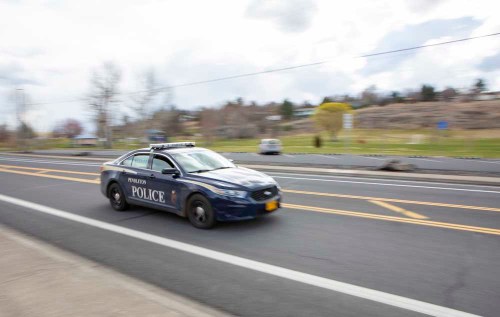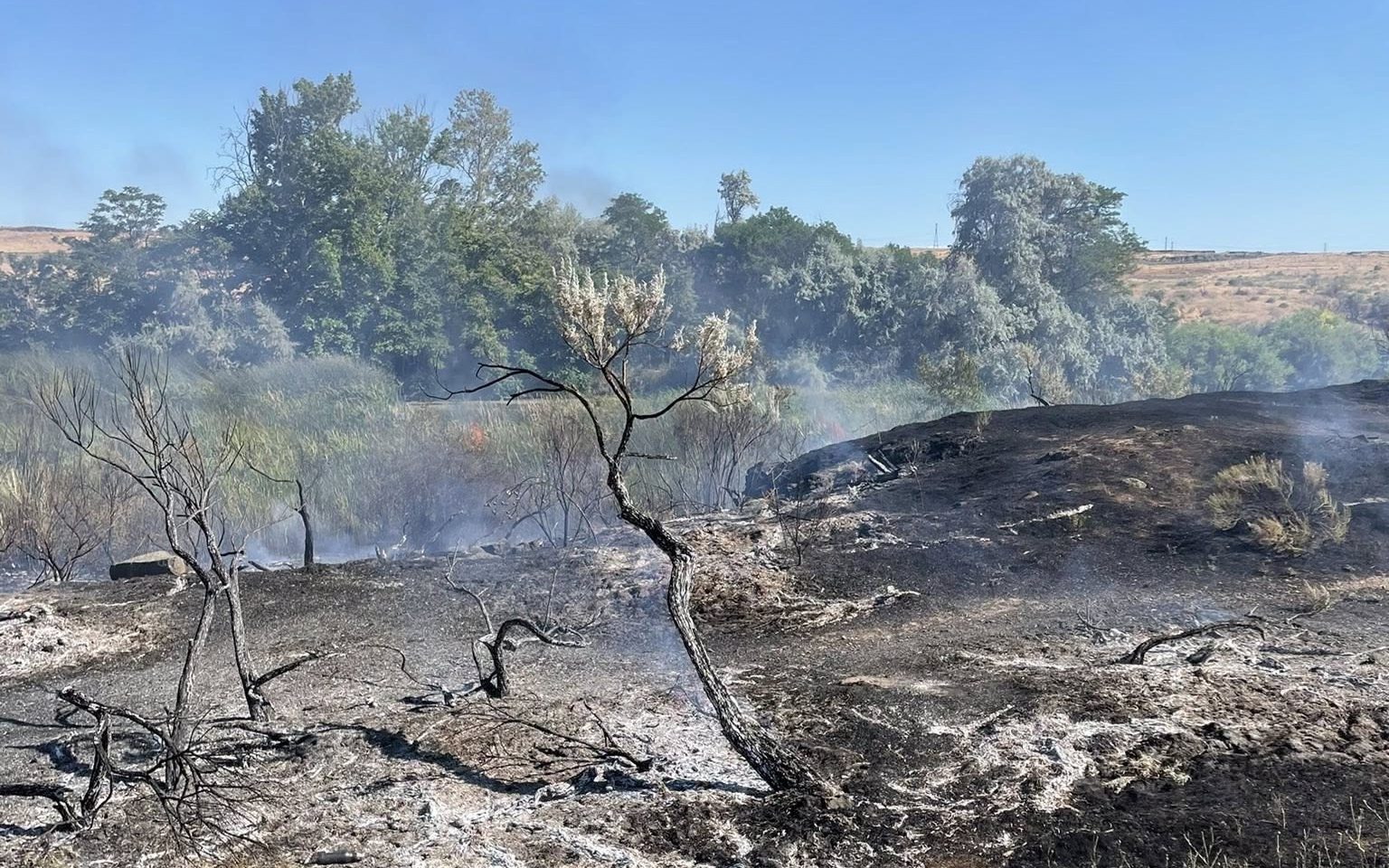Local law enforcement stresses education as Gov. Brown’s order confuses residents
Published 6:00 am Thursday, March 26, 2020

- A police car passes Grecian Heights Park in Pendleton on Wednesday afternoon. The Pendleton Police Department has said that it will use education rather than citation to deal with those in violation of the stay home order for the time being.
UMATILLA COUNTY — After an unofficial request for Oregonians to stay home led to potentially dangerous crowds filling the state’s beaches and parks over the weekend, Gov. Kate Brown issued an executive order Monday officially restricting the state’s 4 million people to their homes except for essential work and needs.
Those who violate the order are subject to a misdemeanor citation and penalties up to 30 days in jail, a $1,250 fine or both.
While the intention was to send a clear message to Oregonians on what’s expected of them to help prevent further spreading of COVID-19, law enforcement in Eastern Oregon spent Tuesday fielding calls from confused residents unsure of how the order would impact them and their neighbors.
Amid the confusion, local law enforcement is emphasizing education over citations and fines for violating the order.
“When it comes to enforcing the ‘stay home, stay safe’ mantra, the plan is just to educate the public without taking any law enforcement action,” Umatilla County Sheriff Terry Rowan said on Wednesday.
That plan was echoed by Pendleton Police Chief Stuart Roberts and Hermiston Police Chief Jason Edmiston, and aligns with strategies of other sheriff’s offices and police departments around the state.
On Tuesday, Oregon Public Broadcasting reported Oregon Attorney General Ellen Rosenblum supported Deschutes County Sheriff Shane Nelson’s plan to “encourage voluntary compliance” and not arrest or cite violators.
If there’s significant pushback and obvious defiance to the order, Rowan said they will reevaluate their approach.
“If we have to move it up the ladder of enforcement, we can and we will,” he said.
Though local law enforcement doesn’t intend to strictly enforce the order, residents throughout Umatilla County were flooding dispatchers on Tuesday with concerns about whether they or others were at risk of violating it.
“It was obvious people don’t understand the order by how they were inundating 911 with questions and suggestions about it,” Roberts said.
Calls ranged from residents unsure if they were allowed to travel from one place to another to wondering whether they could even reach their workplace or doctor’s office in Southeast Washington out of concern that the state borders had been closed.
There’s been no closures along state borders, and while the state is advising against non-essential travel, Rowan confirmed Wednesday that people traveling throughout Umatilla County won’t be stopped and questioned about where they’re going and why.
“At this point, I don’t think that’s necessary,” Rowan said.
However, that’s not the case for travelers on the Umatilla Indian Reservation.
According to the Confederated Umatilla Journal on Monday, the Confederated Tribes of the Umatilla Indian Reservation’s Board of Trustees set stronger restrictions for its community and penalties for those that violate it.
Similar to the order from Brown, the CTUIR’s restrictions require people to stay home except for essential work or needs and those who violate it face up to a year in jail and a $5,000 fine. The board had previously issued an advisory against traveling more than 75 miles and asking any residents on the reservation who do to quarantine themselves for the next 14 days.
The CUJ reported that the Umatilla Tribal Police Department has the authority to stop any vehicle traveling on the reservation, and employees traveling to and from work are required to have ID cards designating them as essential workers. Those who don’t comply may be escorted back to their residence, or will be prosecuted at the discretion of the tribal prosecutor or the CTUIR Office of Legal Counsel.
If it wasn’t travel, it was social distancing that drew calls to dispatchers and police departments around the area on Tuesday.
In Hermiston, Edmiston said they received a number of calls from people about kids playing too closely together and, according to the Hermiston police log, another person called about a business that was screening its employees before letting them in the building but wasn’t enforcing a 6-foot gap between them while they waited in line.
In Pendleton, Roberts said his office had heard several concerns about why a specific business was operating.
Brown’s order permits workplaces like grocery stores, factories and construction sites to continue operating, as long as they can guarantee employees can maintain the recommended 6 feet of distance between one another. And as Roberts pointed out, many of these workplaces are required to have a “social distancing official” to ensure employees can and are following the guidelines.
On Tuesday, the state announced that employees can report business that aren’t following the governor’s order and the guidelines set forth by the Centers for Disease Control and Prevention and the Oregon Health Authority through an online portal with Oregon’s Occupational Safety and Health Division.
But as Umatilla County residents flood dispatchers’ and police departments’ phones with these questions and concerns, Rowan stressed that the 211 number provided by the state, along with other resources from the OHA and CDC, are better equipped to answer non-emergency questions.
Those state and federal agencies, he said, are how he and other law enforcement agencies in the region are ensuring they follow the latest guidelines and are educating the public with the most up to date information.
Unfortunately, that information seems to be changing day by day.
“This thing just continues to evolve,” Roberts said.






